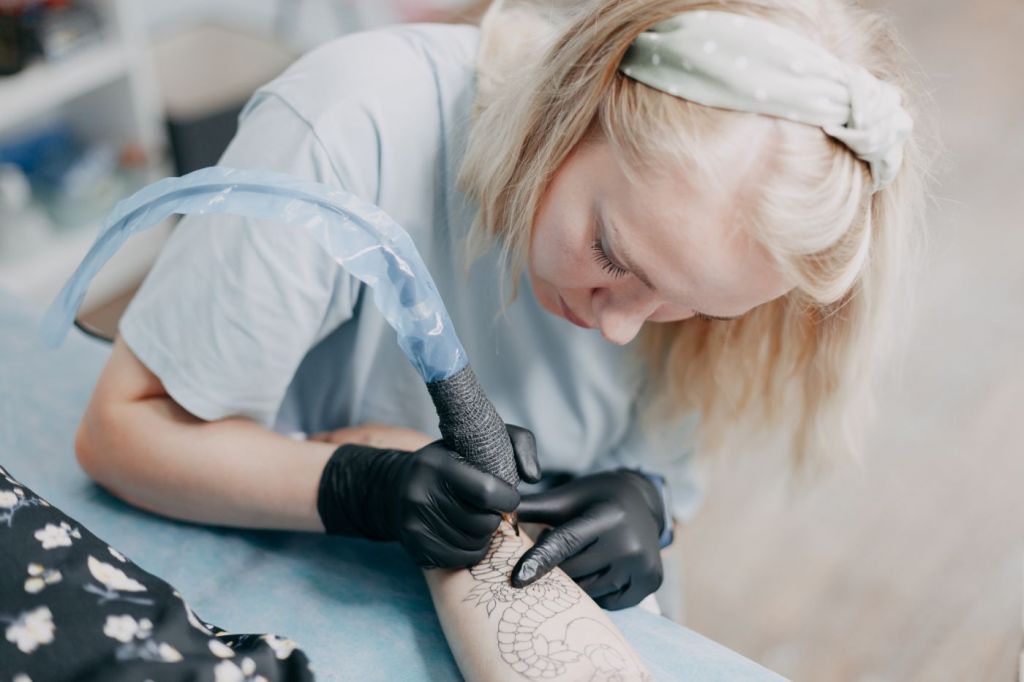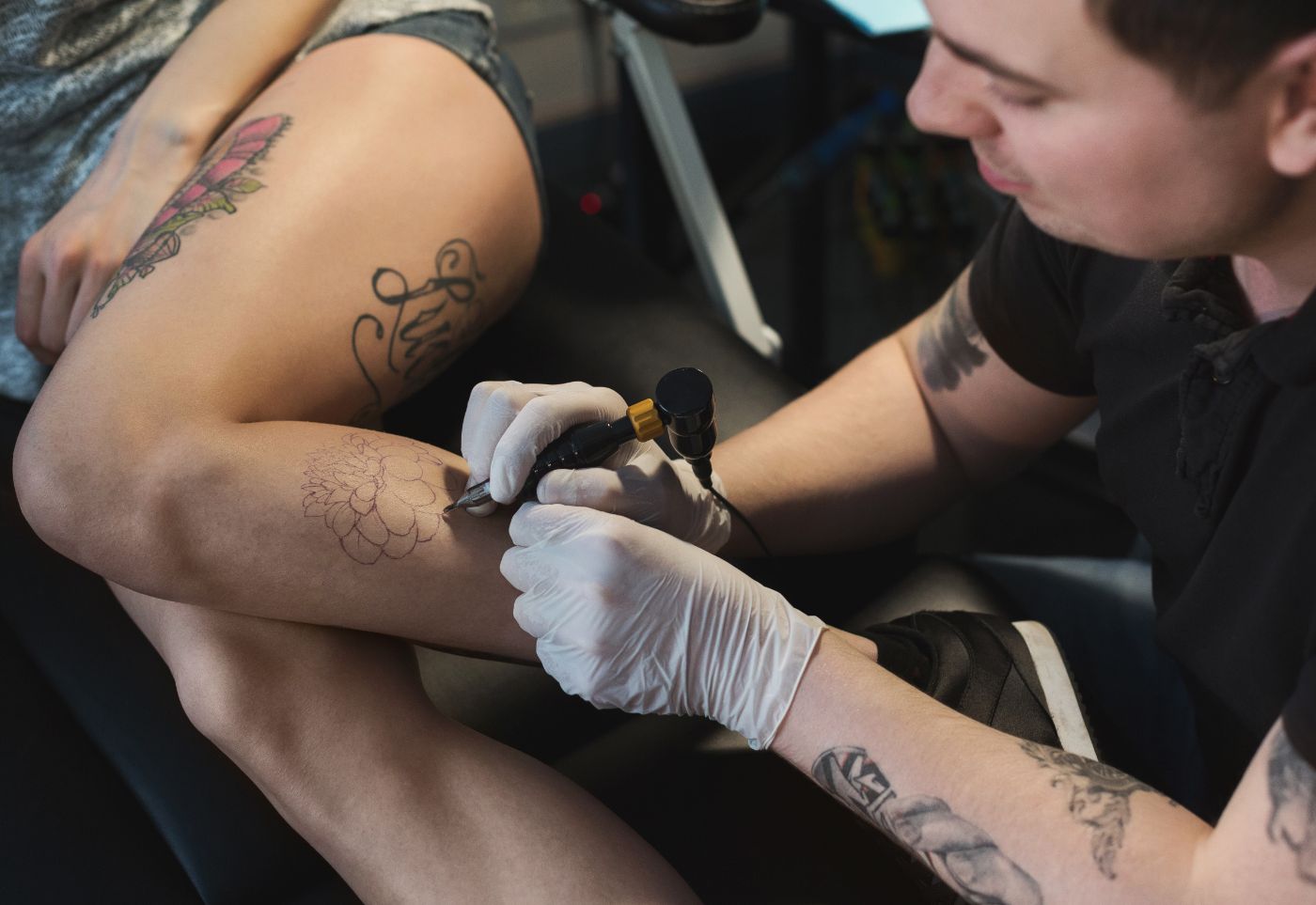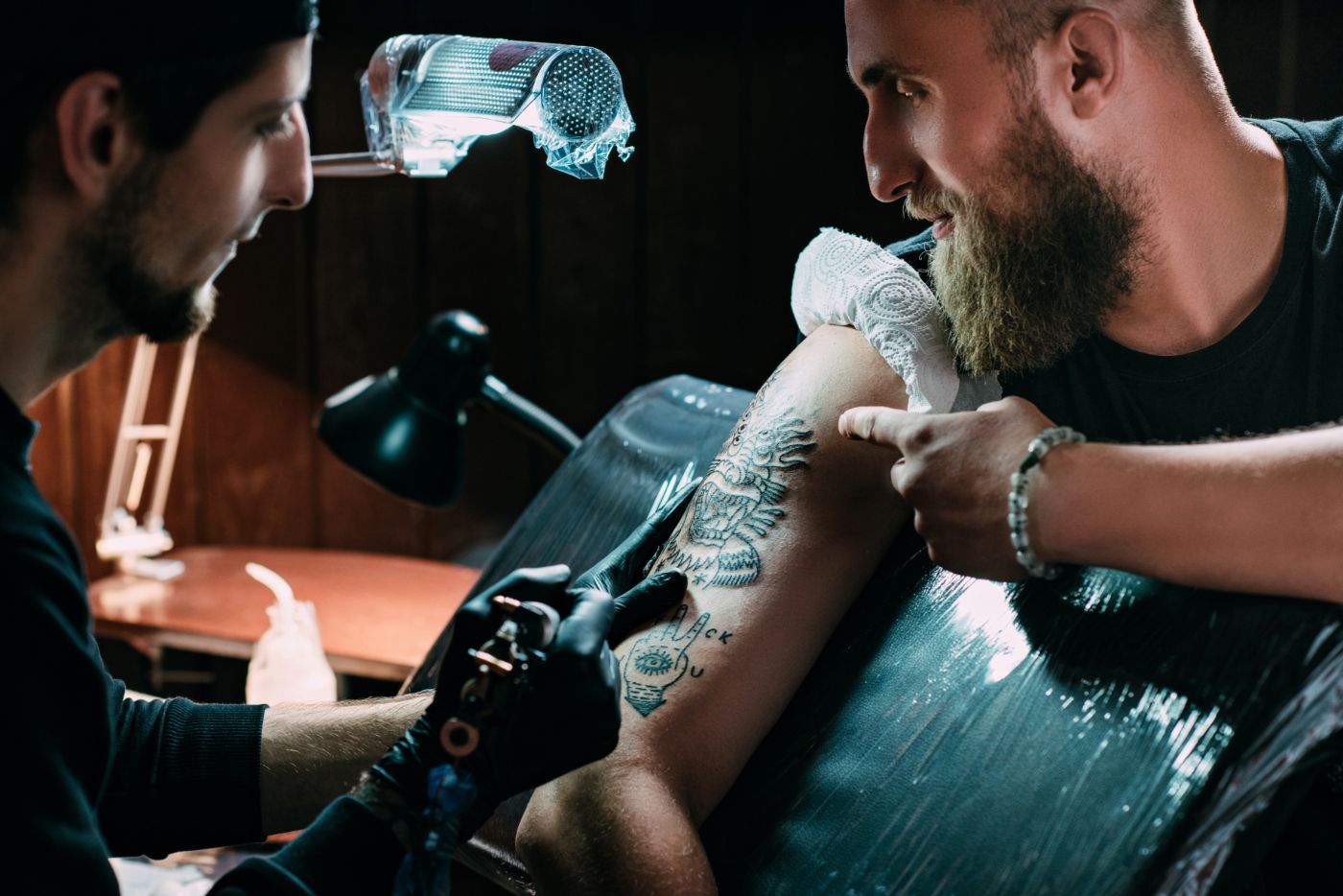Since tattoos come in all sizes and shapes, and most are customized too, their price will vary greatly. This uniqueness can both make you feel inclined to tip your tattoo artist and make it hard to determine the right tipping amount at the same time. Here is a great resource to quickly determine whether you will tip for your ink - and how much.
Most tattoo artists don't expect a tip, since they charge an hourly wage that covers labor and materials. People do tip their tattoo artist to thank them for a job well done, or for a unique design. Most people tip around 20% of the total cost, while 15% seems to be the minimum.
Not all tattoos require the same amount of time or attention to detail. For larger tattoos, the price can go up to hundreds or thousands of dollars. You may be wondering, Am I required to tip on top of that? And exactly how much?

The size of the tattoo may determine the size of the tip. For smaller tattoos, you can get away with tipping 15 percent (but we don’t recommend going lower than that, as this can be construed as rude). Full and half sleeves are more time-intensive, so the tip ought to be a minimum of 20 percent. Because you are spending more time with the artist, you may want to consider going up to 25 or 30 percent.
Many artists will offer free touch-ups, in which case, you may want to consider tipping a minimum of 15 or 20 percent just for their time. Below you'll find a guide for figuring out how much you should tip:
Tattoo cost is one way to determine your tip, but you can also base the tipping amount on the type of tattoo you're getting.
The amounts above are based on 15-20% of the average cost for each tattoo type.

Aside from being a standard practice in America to tip people in the service industry, there are a few factors regarding tattoos, specifically, that you should keep in mind when deciding whether or not to tip:
This is where your tattoo artist gets to show off their creativity. Not only are you likely paying for a custom design, but you are also taking into account the effort and time involved in creating that design. This involves sketching it out, adjusting the size (this may have to be done more than once), and choosing the color scheme. Once these decisions are finalized, the artist turns it into a stencil that is placed on your skin before permanently inking it. This process alone can take an hour or longer.
Your artist may have had to purchase their own supplies for tattoos: the ink machine, the ink itself, drawing paper, and possibly more. They may not be reimbursed for any of these supplies.
Depending on the size and complexity of your design, you may not finish it all in one sitting. If you are required to schedule more than one visit, using more of your artist’s time, you should strongly consider a tip.
Besides the actual tattooing process, a good artist will walk you through the experience from beginning to end, from helping you cope with the pain of it to explaining the aftercare process. They should patiently answer any of your questions, as well as provide a clean, sanitized environment. This includes wearing new gloves, sanitizing tools, and using fresh needles.
A tip does more than adequately compensate an artist for their work: it tells your tattooist “I appreciate you.” You are showing appreciation for the artist’s quality work, expertise, and time. Tipping well also helps establish a bond between you and your artist, which is vital if you decide to come back for more ink in the future.
Tips are also a good idea if your artist offers touch-ups free of charge, because they are still giving you their time, using their tools, and performing an additional service.

Tipping tends to communicate value for both the artist and the product you’re purchasing. That said, there are some circumstances in which you do not have to feel any obligation to tip:
If the artist doesn’t answer your questions, or otherwise provides an uncomfortable experience (besides the obvious discomfort of the tattoo itself), you shouldn’t feel obligated to tip.
We hope you will do your research beforehand and choose a reputable artist, but sometimes unexpected complications arise. If your design isn’t what you pictured, then you should not leave a tip.
You would assume that most tattoo artists aren’t opposed to making extra money, and you would be correct. The rules of tipping are a bit more fluid than they are in the food industry, however. In restaurants, tips help make up the majority of the server’s wages for the day. That’s not always the case for tattoo artists, where tipping is more of a way to say “thank you” for doing a good job. But many tattoo artists feel that tipping below 15 percent is a type of insult; a sign that you are unhappy with their work, or the equivalent of leaving a penny on your restaurant table. If you do decide to tip, be sure to do so around the 20 percent range or higher.
There are artists who take additional service fees into account when they set their prices; services like the cost of ink, fresh needles, machinery, etc. In this case, the hourly rate is enough to compensate the artist for their time and effort while allowing them to pay their bills. Tips on top of that are considered a bonused, but not expected.
"The average tattoo artist salary is $61,670 per year, or $29.65 per hour, in the United States. In terms of salary range, an entry level tattoo artist salary is roughly $26,000 a year, while the top 10% makes $144,000."
- Source: Zippia.com
Not all tattoo artists keep all of the profit from services rendered. In some cases, tattoo artists see anywhere from 30 to 70 percent of the profit from their services. The rest of the money can go toward a “booth rental” fee, similar to how hair salons operate. They may also owe money for building rent, utilities (if you’re sitting for a long time getting inked, a bathroom is vital!), and inking supplies – not to mention paying their additional employees. Additionally, there are taxes to consider. If your artist is an independent contractor, the taxes aren’t automatically taken out of the payments they receive. That means they’ll owe anywhere from 20 to 30 percent of their fees to the government when tax season comes around. Tipping can help cushion the blow.
Across the United States, tattoo artists can make anywhere from $40k to $100k per year. Some of the benefits include a flexible schedule, relocation assistance, professional development assistance, and employee discounts. The following cities are where tattoo artists tend to earn more than the national average:
This is not a uniform policy for all tattoo shops, but many will not accept tips on credit cards. If you plan to tip, you may want to call and find out this information before showing up for your appointment. Otherwise, you’ll want to provide your tip in cash.
In lieu of or in addition to a monetary tip, there are other ways you can show appreciation for your tattoo artist. First and foremost, pictures are worth a thousand words; take a picture of your new ink and share it on social media (don’t forget to tag the artist!). While exposure doesn’t help pay a tattoo artist’s bills, it can get the attention of future customers who are in the market for new ink, and help the shop appear in more Google search results. In your post, share what you loved about the experience. You can also leave a positive review on the artist’s webpage or on Yelp.
When it comes down to it, there is no rule that says you absolutely have to tip your tattoo artist. Is it a nice thing to do? Absolutely. Will the artist appreciate it? Most likely! We’ve given you multiple factors to consider when it comes to making your decision. But no matter what you decide, make sure to be polite and courteous to your artist, and thank them for a job well done.